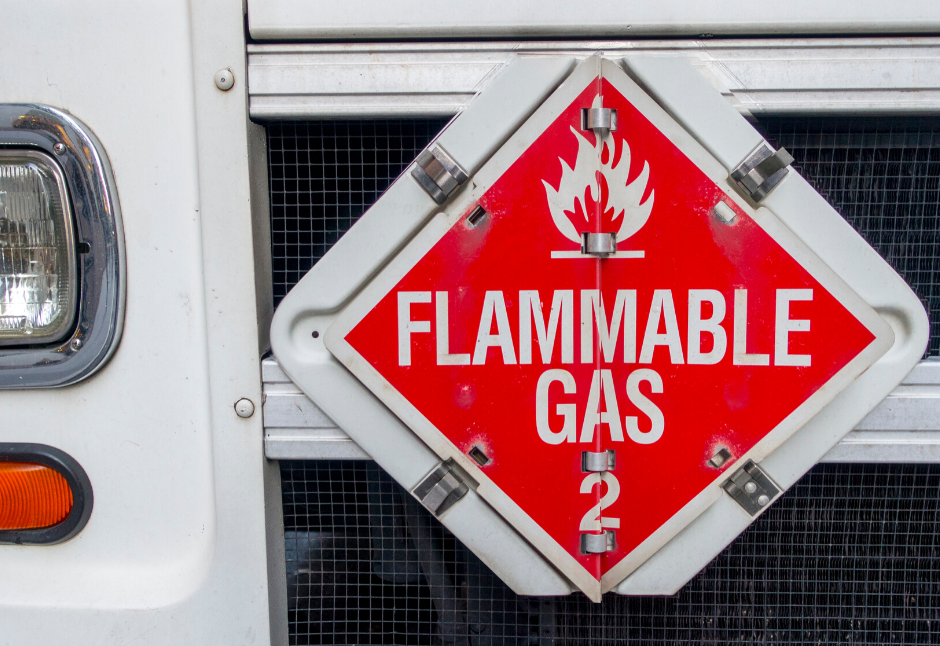Hazmat materials are among the most difficult and regulation-heavy products to ship, with many rules and regulations you must follow to transport them. Any time you’re shipping hazardous materials, such as explosives, gases, or radioactive materials, follow these seven key steps to make the shipping process as safe and stress-free as possible:
Step One: Get the Proper Hazmat Shipping Certification & Training
When shipping hazardous materials, it’s vital to do so with the adequate training and hazmat shipping certification. The US Department of Transportation (DOT) requires that you be trained and certified before you ship, dispatch, route, or transport any hazardous materials. The requirements cover packaging and labeling of hazardous materials, in addition to documentation. To help enforce safety and compliance, there are fines for non-compliance and potential legal action if you’re found to have willfully ignored hazardous materials shipping regulations.
Step Two: Find the Correct Hazmat Material Safety Data Sheet
To ship hazmat material, start by looking up the item’s Material Safety Data Sheet (MSDS). Most consumer products from reputable manufacturers will have an MSDS that includes the product’s transportation hazard classification. This classification provides a four-digit number, a proper shipping name, the hazard class, and the packing group for the product. (Note: Your MSDS is a separate document from your Ocean Hazmat Declaration).
Many truckers have exclusions for hazmat or certain hazmat classes that a shipper may not know about. Knowing your hazmat class and packing group is of the utmost importance. Your MSDS will also provide guidance in case of an accident, spill, or other emergency. For example, some chemicals such as sodium, potassium, and lithium explode when mixed with water. This is vital information emergency workers (such as firefighters) need access to. Always look for a United States agency name and phone number on your MSDS.
The information found on Safety Data Sheets will also help you identify the correct entry on the Hazardous Materials Table. The Hazardous Materials Table contains references to the appropriate packaging sections, quantity limitations, and any special exceptions. It also provides label codes and basic descriptions for the hazmat. Obtaining the correct hazard classification is crucial to getting started with shipping hazmat.
Step Three: Determine Hazmat Quantities and Select Packaging
Your packaging will depend on the amount of hazmat you’re planning to ship. Be sure to use the packaging section specified for your material. Depending on the hazmat and quantities, performance packaging may be required. The Pipeline and Hazardous Materials Safety Administration (PHMSA) has created a guide which will help you identify and understand performance packaging markings.
If you’re shipping multiple commodities together, be sure to check the Dangerous Goods Segregation Table prior to transporting or storing goods together. Incompatible hazmat in close proximity is an accident waiting to happen due to the potential for dangerous chemical reactions. It’s important for truckers to know the specifics of your hazmat to ensure another customer’s freight can be commingled safely on the same truck.
Step Four: Package Your Material
Package your hazmat shipment according to the requirements listed in the regulations. If you need to use performance packaging, you’ll have to follow the manufacturer’s instructions for how to assemble and close the packaging. Deviating from the manufacturer’s instructions could compromise the integrity of the packaging, and result in potential safety concerns with the release of hazardous materials.
Step Five: Mark and Label Your Packages
When shipping hazmat, it’s critical to apply the appropriate hazmat shipping labels to your package. This may include hazard communication information such as the shipper’s information, orientation arrows, identification numbers, shipping name markings, or hazard class labels.
The United States DOT also requires vehicles transporting dangerous goods to display the appropriate DOT hazard class placards on all sides of the hazmat transporting vehicle.
Step Six: Prepare Your Hazmat Shipping Papers
Sometimes additional paperwork, hazmat shipping papers, are required in order to ship hazmat items, depending on the material being transported. Proper hazmat shipping papers contain information including a description of the hazmat, including the following:
- UN identification number
- Proper shipping name
- Hazard class
- Packing group
- Quantity, number, and type of packages
- Emergency contact information
- Shipper’s certification
You must prepare all requested documentation to ensure your shipment goes out without delay.
Step Seven: Find an Experienced Hazmat Carrier
Shipping hazardous materials is a complex process, but it doesn’t have to be overwhelming. To alleviate some of the stress, the DOT recommends working closely with a trusted hazmat carrier. This can ensure any additional requirements are identified, and your hazmat shipments make it to their destination safely. Partnering with an experienced logistics company will eliminate shipping delays, routing mistakes, and potential accidents and liabilities.
Ground Force provides innovative hazmat solutions throughout North America while maintaining top-tier service. Our team is certified to meet local, state, and federal laws for dangerous materials. We have been a trusted partner since 2005 to many customers, making sure shipments arrive at their destinations quickly, professionally, and safely, without exception. Register to get an instant shipping quote today!

